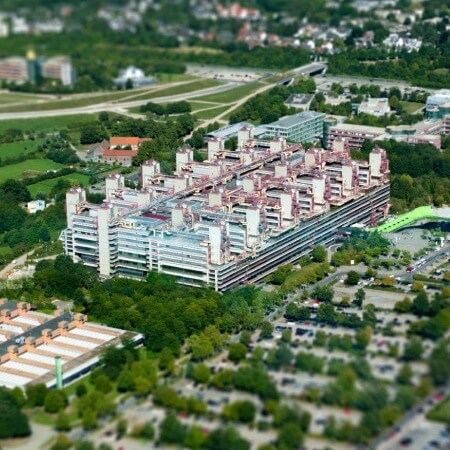Content
- Overview
- Indications
- Types of facelift surgery
- Facelift surgery
- Stages of facelift procedure
- After a facelift surgery
- Where can I undergo facelift surgery?
- The cost of facelift surgery in Germany
- How can I undergo facelift treatment in Germany?
With age, the skin of the face and neck loses its elasticity gradually. As a result, the skin in the cheek area becomes saggy and bags under the eyes appear, wrinkles and nasolabial folds appear, the skin on the neck becomes flabby. These processes not only change the shape of the face but also quite often negatively affect self-esteem, facilitating various insecurities.
Overview
As a type of aesthetic surgery, facelift surgery allows correcting the soft tissues of the face and neck, successfully eliminating any manifestations of age-related changes, even if they are very pronounced.
The facelift procedure is aimed at reducing the visible signs of skin aging by removing excess adipose tissue, tightening, and redistributing the skin of the face and neck. As a rule, only pronounced skin changes that are difficult to correct cosmetically are indications for surgical intervention.
Recently, there has been an increase in the number of men and women who seek plastic surgery to improve their appearance. A young and well-groomed face is highly essential today. Therefore, a facelift is gradually becoming one of the most common types of plastic surgery in modern medicine.
Unfortunately, aging of the soft tissues of the face is inevitable and is a part of the natural general biological changes in the body. Age-related changes depend largely on the deficiency of the supporting collagen structures in soft tissues. As a result, some tissues sag down, such as eyebrows, upper and lower eyelids, cheeks.
Age-related changes also affect the neck: the skin becomes flabby, wrinkles form, the double-chin may appear. Various somatic diseases, exposure to harmful environmental factors, and bad habits can accelerate the aging process of the soft tissues on the face and around the face. Thus, due to the complex of reasons, by the age of 40, wrinkles are formed in the forehead, eyes and under-eye area, nasal area; the contour of the face changes, and then it becomes clear that even professional cosmetic care is not enough.
Indications
Indications for facelift plastic surgery include:
- Sagging skin of the face
- Wrinkles in the nose area
- Overhanging eyelids
- Lowering of the outer corners of the eyes
- Deep vertical wrinkles on the cheeks
- Deep nasolabial folds
- Double chin
However, there are some contraindications associated with the general medical condition of the patient. These include infectious and oncological diseases, severe diseases of internal organs, and blood clotting disorders.
Before the treatment with plastic surgery, the specialist will carry out the entire complex of necessary diagnostics to avoid unforeseen complications. Besides, as facelift is a strictly individual aesthetic surgery, the plastic surgeon tries to bring the result as close as possible to the patient's wishes, explaining the plan and results of the facelift a few days or even weeks before the treatment starts.
As with any procedure in medicine, the facelift has a list of contraindications. If you decide on a facelift, you should consider if any of the following medical conditions are present:
- Oncological diseases
- Genetic and acquired pathologies of blood clotting
- Cardiovascular diseases
- Mental disorders
- Pregnancy
- Lactation period
- Skin inflammation
- Infectious skin lesions
- Endocrine diseases (especially in the acute stage)
Plastic surgery is not recommended for young women and men if it can be avoided. However, a facelift can also be non-surgical.
The main thing is to monitor the condition of the skin from an early age, take care of it, walk in the fresh air, eat right, drink enough water and do facial exercises. In this case, age-related changes will be less noticeable, and it will be possible to tighten the skin as painlessly as possible and at a minimal expanse.
Types of facelift surgery
Modern medicine provides more than a dozen types of operational facelifts. The main ones are:
- The actual facelift surgery. Facelift with surgery is the most effective method of preserving youth and beauty. A facelift is usually performed under general anesthesia, and the whole plastic surgery takes 4-5 hours.
- Circular facelift. A circular facelift is also called a rhytidectomy. During the plastic surgery, the surgeon redistributes the tissues, which contributes to the reduction of wrinkles. Only an experienced surgeon in a reputable clinic should do a circular lift since this type of facelift is considered one of the most difficult, but also the most effective ones.
- Endoscopic facelift. The technique of this plastic surgery is similar to a circular facelift. The difference is that the incisions are made in the scalp region. After facelift completion, the patient stays in the hospital for several days, under the supervision of doctors. The recovery period is long, and the result of the facelift is noticeable only several months after treatment.
- Deep face lifting. This facelift is recommended for people with age-related signs in the midface and cheeks. The essence of this plastic surgery is to return the original condition of the soft tissues of the face that are shifting downward with age.
- SMAS-lifting. The abbreviation SMAS stands for the superficial muscular aponeurotic system. This connective tissue is located in the muscles of the cheeks. With age, the system loses its tone, so the unpleasant signs of age appear. SMAS-lifting allows eliminating them.
Facelift surgery
As it was mentioned, there are several different types of facelift. It can be lifting only the facial skin (such surgery is quite simple, its price is low, but the effect lasts only 2-4 years), partial or complete lifting of the skin and facial muscles (chewing muscles, neck muscles; the method is called SMAS and gives a long effect). Often a facelift is combined with other types of plastic surgery.
The facelift is performed under general anesthesia. The essence of the plastic surgery is in the detachment of the soft tissues of the face, subsequent tightening of the skin and deep soft tissue structures, the so-called SMAS-system (superficial muscle-fascial system), excision of excess skin, and the formation of a new facial contour.
According to the preoperative marking, a skin incision is made. The incision line is located in the temporal region of the scalp, smoothly bends around the ear, around the earlobe, and in the scalp behind the ear. Despite its considerable length, the postoperative scar is virtually invisible.
Dissection of the skin will be performed to the end of the orbital branch of the facial nerve, nasolabial fold, to the edge of the lower jaw, and the neck.
Next, the detachable SMAS flap is marked. The skin is dissected, and the excess skin is measured and marked. Guiding sutures are applied and excess skin is removed. Small drainage tubes are placed under the skin on each side of the incision area to allow blood and fluid to drain under the skin after the treatment. Skin sutures are applied with sterile instruments.
The outline of the dissection of the skin depends on the severity of age-related changes. If necessary, liposuction of the chin area is performed additionally.
Stages of facelift procedure
Consultation. Facelift pursues not only the goal of rejuvenating the face, but also preserving its individuality, and facial features. During the consultation, the doctor examines the patient, clarifies the desired results (including what exactly the patient does not want), and tells how the plastic surgery will be carried out.
Diagnostics. Before the treatment, the patient undergoes the necessary diagnostics and laboratory tests and is examined by a therapist and anesthesiologist. All these procedures can be carried out in the clinic chosen for treatment. This stage does not take much time.
Carrying out a facelift. The intervention is performed according to the chosen technique.
Recovery period. The patient needs to stay under the supervision in the hospital for several days. After that, the patient needs to follow the recovery regimen prescribed by the doctor.
After a facelift surgery
The postoperative period lasts long enough, and the result depends on how well the patient follows the doctor's instructions. After the facelift, a hospital stay up to 3-4 days is usually recommended. For about a week the patient has to wear a special compression bandage. The stitches are removed in 7-10 days after the treatment completion.
Of course, in the first time after the plastic surgery, any physical activity is excluded – even washing and dyeing your hair should be done with great care.
The ultimate result of the facelift is visible in at least two months after the treatment when the healing of scars begins.
Complications
The most frequent complications include:
- Swelling of the facial skin and bruises.
- Skin pigmentation. Skin pigmentation occurs in patients with sensitive skin and disappears on its own within six months after plastic surgery.
- Temporary hair loss around the skin incisions in the scalp (subsequently, hair growth is restored on its own).
Rare complications are:
- Bleeding in the postoperative period (less than in 1% of the cases)
- Damage of the facial nerves
- Weakness of facial muscles
- Damage of the ear nerves
- Infection of postoperative wounds
A facelift will help patients look 7-8 years younger. The ultimate result largely depends on the patient's age, the initial condition of the skin, the presence of concomitant diseases and bad habits, on the lifestyle (work, nutrition, etc.). The same factors will determine the duration of the anti-aging effect after plastic surgery.
Repeated facelifts can be performed at intervals of 5-10 years. Therapeutic cosmetic procedures postpone the reoperation time significantly.
Where can I undergo facelift surgery?
Medical tourism is becoming more and more popular these days. Treatment in Germany specifically ensures a much better quality of facelift surgery.
The following hospitals demonstrate the best results in facelift surgery:
- University Hospital of Ludwig Maximilian University Munich
- University Hospital Erlangen
- University Hospital RWTH Aachen
- University Hospital Jena
- University Hospital Bonn
You can check out the full list of clinics on the Booking Health website.
The cost of facelift surgery in Germany
The prices in hospitals listed on the Booking Health website are relatively low. With Booking Health, you can undergo treatment in Germany in the best hospitals at an affordable price.
The cost of facelift surgery in Germany with MACS-lifting is 12,485-20,524 EUR.
The cost of facelift surgery in Germany with endoscopic lifting is 14,128-20,259 EUR.
The cost of facelift surgery in Germany with SMAS-lifting is 12,489-20,622 EUR.
The cost of facelift surgery varies, as the prices depend on hospitals, the chosen type of plastic surgery, and the complexity of treatment.
You also need to consider the cost of additional corrective procedures and follow-up care. Therefore, the ultimate cost of facelift surgery in Germany may differ from the initial price.
To receive the information on the cost of facelift surgery in Germany, contact us by leaving the request on the Booking Health website.
How can I undergo facelift treatment in Germany?
It is not easy to self-organize any treatment abroad. It requires certain knowledge and expertise. Thus, it is safer, easier, and less stressful to shift some responsibility onto a medical tourism agency.
As the largest and most transparent medical tourism agency in the world, Booking Health has up-to-date information on facelift surgery rates in the best hospitals and clinics in Germany. It is vital to have precise information on the success rates in plastic surgery of the specific hospital for successful treatment. Booking Health will help you select a clinic, taking into account your wishes for treatment.
We want to help you and take on all the troubles. You can be free of unnecessary stress, while Booking Health takes care of all organizational issues. Our goal is to find the best medical facility for you, where you can undergo treatment in Germany safely.
Medical tourism can be easy! All you need to do is to leave a request on the Booking Health website, and our manager will contact you shortly.
Authors: Dr. Nadezhda Ivanisova, Dr. Sergey Pashchenko















